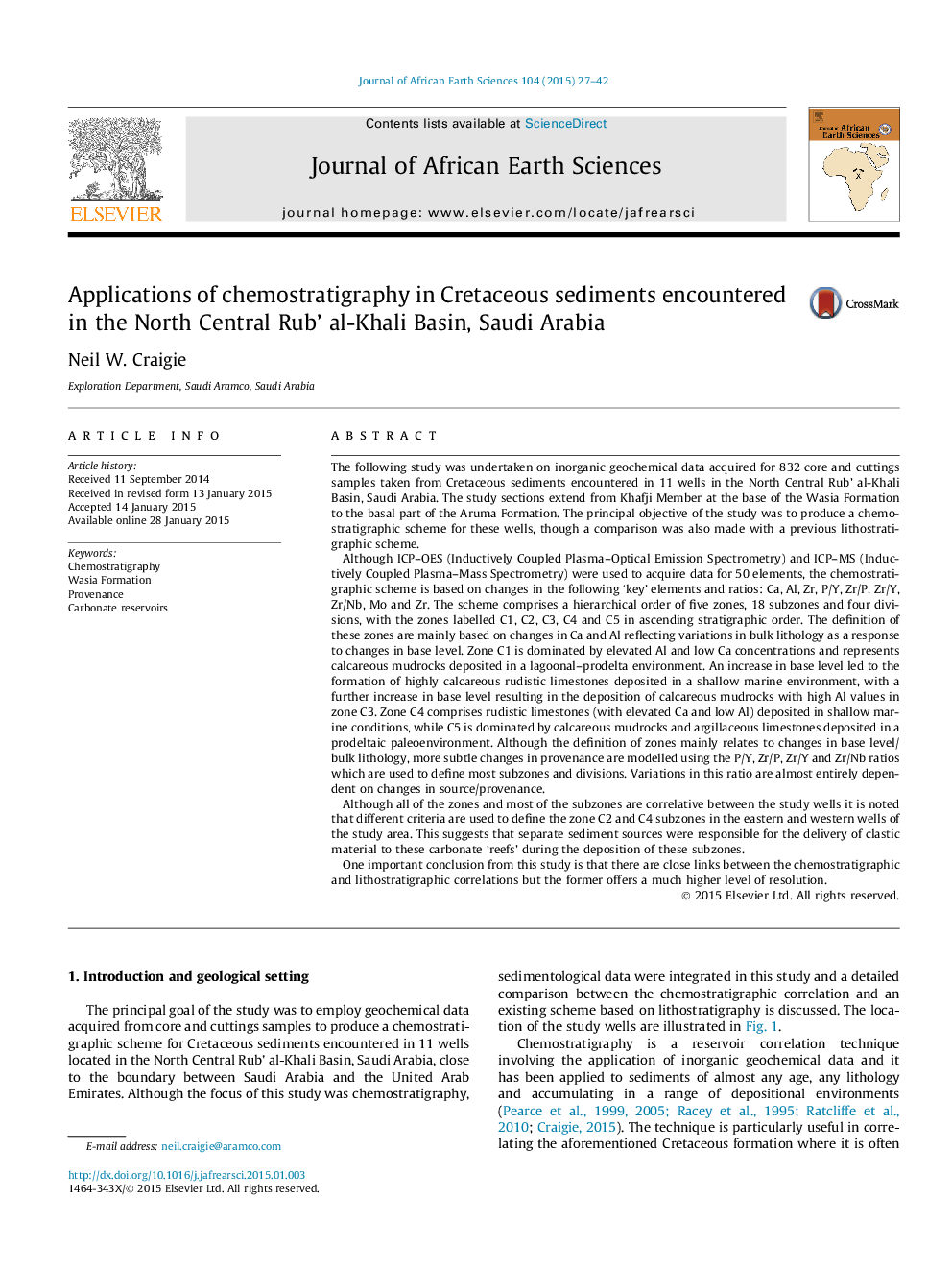| کد مقاله | کد نشریه | سال انتشار | مقاله انگلیسی | نسخه تمام متن |
|---|---|---|---|---|
| 4728539 | 1640203 | 2015 | 16 صفحه PDF | دانلود رایگان |
• Produced a chemostratigraphic scheme of 5 zones, 18 subzones and 4 divisions.
• Defined zones based on changes in base level/bulk lithology.
• Defined subzones and division based mainly on changes in source/provenance.
• Differences in provenance are noted between the eastern and western wells.
• The chemostratigraphic and lithostratigraphic correlations are similar.
The following study was undertaken on inorganic geochemical data acquired for 832 core and cuttings samples taken from Cretaceous sediments encountered in 11 wells in the North Central Rub’ al-Khali Basin, Saudi Arabia. The study sections extend from Khafji Member at the base of the Wasia Formation to the basal part of the Aruma Formation. The principal objective of the study was to produce a chemostratigraphic scheme for these wells, though a comparison was also made with a previous lithostratigraphic scheme.Although ICP–OES (Inductively Coupled Plasma–Optical Emission Spectrometry) and ICP–MS (Inductively Coupled Plasma–Mass Spectrometry) were used to acquire data for 50 elements, the chemostratigraphic scheme is based on changes in the following ‘key’ elements and ratios: Ca, Al, Zr, P/Y, Zr/P, Zr/Y, Zr/Nb, Mo and Zr. The scheme comprises a hierarchical order of five zones, 18 subzones and four divisions, with the zones labelled C1, C2, C3, C4 and C5 in ascending stratigraphic order. The definition of these zones are mainly based on changes in Ca and Al reflecting variations in bulk lithology as a response to changes in base level. Zone C1 is dominated by elevated Al and low Ca concentrations and represents calcareous mudrocks deposited in a lagoonal–prodelta environment. An increase in base level led to the formation of highly calcareous rudistic limestones deposited in a shallow marine environment, with a further increase in base level resulting in the deposition of calcareous mudrocks with high Al values in zone C3. Zone C4 comprises rudistic limestones (with elevated Ca and low Al) deposited in shallow marine conditions, while C5 is dominated by calcareous mudrocks and argillaceous limestones deposited in a prodeltaic paleoenvironment. Although the definition of zones mainly relates to changes in base level/bulk lithology, more subtle changes in provenance are modelled using the P/Y, Zr/P, Zr/Y and Zr/Nb ratios which are used to define most subzones and divisions. Variations in this ratio are almost entirely dependent on changes in source/provenance.Although all of the zones and most of the subzones are correlative between the study wells it is noted that different criteria are used to define the zone C2 and C4 subzones in the eastern and western wells of the study area. This suggests that separate sediment sources were responsible for the delivery of clastic material to these carbonate ‘reefs’ during the deposition of these subzones.One important conclusion from this study is that there are close links between the chemostratigraphic and lithostratigraphic correlations but the former offers a much higher level of resolution.
Journal: Journal of African Earth Sciences - Volume 104, April 2015, Pages 27–42
